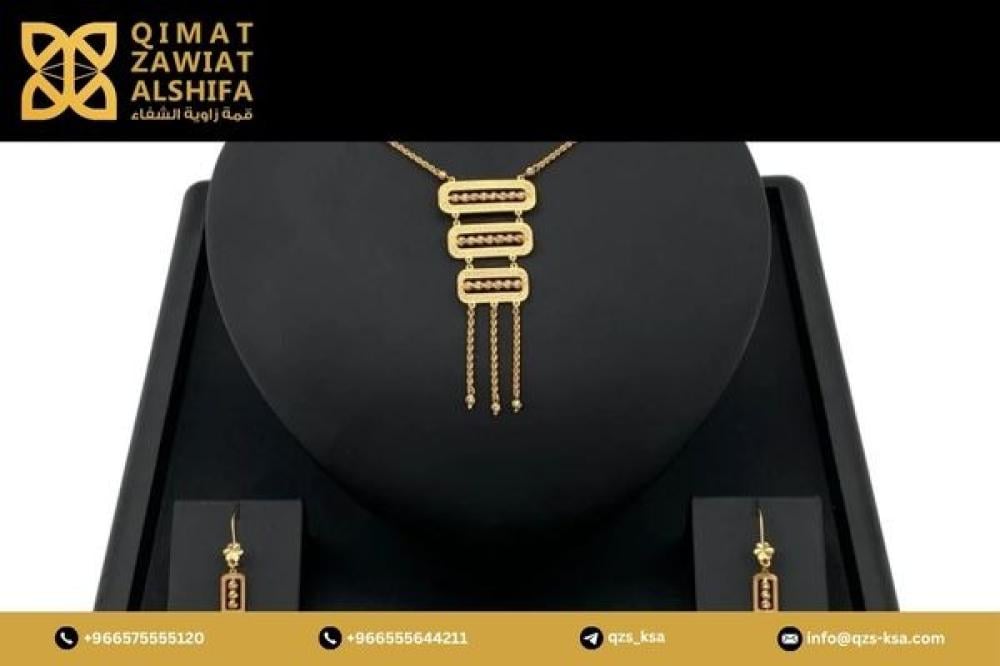In the dazzling world of gold, shine alone isn't enough to prove authenticity! Many people fall victim to counterfeit gold without realizing it, especially with the prevalence of sophisticated scams and fraudulent methods. This is where awareness and knowledge come in. At the Healing Corner for Gold and Jewelry , we offer a reliable guide to help you distinguish between real and fake gold, ensuring a safe investment and lasting jewelry.
What are the best ways to identify real gold?
If you're looking for a quick and easy way to confirm that the gold you're holding is authentic, a thorough visual inspection is the first step you can rely on.
Real gold often has an engraved stamp indicating the karat or purity, such as:
10K, 14K, 18K, 24K or symbols like 750, 916, 999 , are universal designations used to distinguish pure gold from non-pure gold.
Here are some distinguishing signs that will help you distinguish between real and fake gold:
- Real gold does not corrode or flake , and does not leave black or green marks on the skin, unlike cheap plated metals.
- Gold is highly resistant to oxidation, so it does not rust or change color over time, even when exposed to air or moisture.
- Real gold does not react with weak acids like vinegar or lemon juice, and a simple home experiment can quickly reveal fake gold.
Now at the top of the healing corner, a 21-karat gold bracelet weighing 8.48 grams . Shop now and get unparalleled elegance.
Add a charming touch to your look with this 21-karat gold set weighing 11.51 grams, decorated with a shiny green stone , only at the top of the healing angle.
Shine with this 21-karat gold set, weighing 7.69 grams , only at the top of Zawiya Al Shifa. Shop now.
Add a touch of luxury to your look with this 21-karat gold necklace, weighing 6.14 grams , from Qimat Zawiya Al Shifa, the best store in Riyadh.
Enjoy elegance and luxury with this 21-karat gold bracelet weighing 13.19 grams , designed by Van Cleef, now available only at Qimat Zawiya Al Shifa.
Make your look more sparkling with this 18-karat gold bracelet weighing 8.01 grams, decorated with roses on both ends . Shop now from Qimat Zawiya Al Shifa.
How to tell real gold from fake?
With the prevalence of fraud in the gold market, many people are looking for easy and simple ways to verify the authenticity of gold pieces. Fortunately, there are effective home tests using readily available tools such as magnets, vinegar, and water that can help you detect real gold in practical steps.
Gold magnetic test
One of the quickest methods people resort to is testing a gold piece with a magnet. Why? Because pure gold isn't attracted to magnets. If you hold a magnet close to a piece of gold and notice that it doesn't move, that's a good sign. If it does move, however, it may contain other metals or be entirely fake.
Gold test with vinegar
White vinegar is a common test for gold purity. Here are the steps:
- Clean the piece thoroughly with soap and water, and dry it completely.
- Put enough vinegar in a glass to cover the gold piece.
- Submerge the entire piece in vinegar and leave it for 5 to 10 minutes.
- Monitor the results:
- Real gold does not tarnish or change color.
- If discoloration or signs of wear appear, the piece may not be pure gold.
gold test with water
Another effective method based on the density of gold is to use water:
- Fill a cup with water.
- Gently place the gold piece inside.
- Watch what happens:
- If it sinks and settles to the bottom quickly , it is most likely real gold.
- If it stays floating or stuck in the middle , there's a good chance it's not pure gold.
How to tell real gold from plated?
Want to easily distinguish between real and plated gold without the need for complex equipment? Here's a practical guide that will show you the difference in simple, clear steps:
Step 1: Measure the density
Start by weighing the gold piece accurately, then immerse it in a bowl of water and measure the amount of displaced water.
Next, use the simple equation:
Density = weight ÷ volume of displaced water
If the density is close to 19.3 g/cm³, this is a strong indication that the gold is genuine. If it is much lower, the piece may contain other metals.
Step 2: Ceramic Test
Use an uncoated piece of ceramic and gently brush the gold over it.
- If a shiny golden line appears, it is real gold.
- If it leaves a black or gray residue, it is likely painted or fake.
Step 3: Acid Test
Use a gold acid testing kit, available at jewelry stores or online, and place a small drop of acid on a small part of the piece.
- Real gold will not tarnish or change color.
- Unrefined or plated gold may discolor or show signs of wear.
Step 4: Consult a jewelry expert
To obtain a reliable result, it is best to consult a professional jeweler or metal expert, as these specialists possess precise tools and advanced techniques capable of accurately analyzing the components of gold and verifying its authenticity.
Ultimately, knowing the difference between real and fake gold is not only a way to protect your money, but it's also a smart move that ensures you're purchasing jewelry of true value that will last for a lifetime.
At Qimat Zawiya Al Shifa Gold and Jewelry, the best gold store in Saudi Arabia , we believe that trust begins with transparency. That's why we guarantee the quality of our gold and help you make informed and safe purchasing decisions.
Frequently Asked Questions
Is there a stamp that shows if the gold is real?
Yes, every genuine gold piece has a karat stamp (such as 18K, 21K, or 24K). You can examine the stamp with a magnifying glass. If you don't find it, the piece may be fake or too old.
Does a magnet reveal if gold is real?
Real gold is not magnetic, so if a piece is attracted to a magnet, it is likely fake or contains non-precious metals.
How do I test gold at home?
You can test gold by rubbing it on an uncoated piece of porcelain. If it leaves a gold line, it is most likely real. If it leaves a black or gray line, it may be impure.
Does real gold change color over time or when exposed to water?
No, pure gold does not tarnish or rust. If you notice discoloration or green or black spots, the piece may be fake or simply plated.


